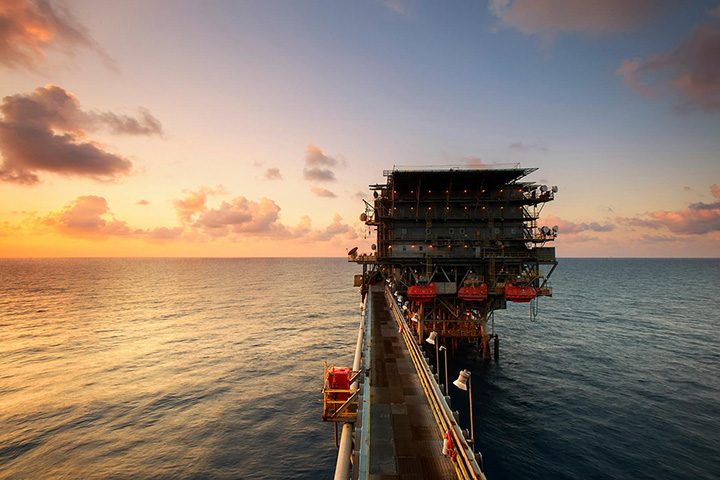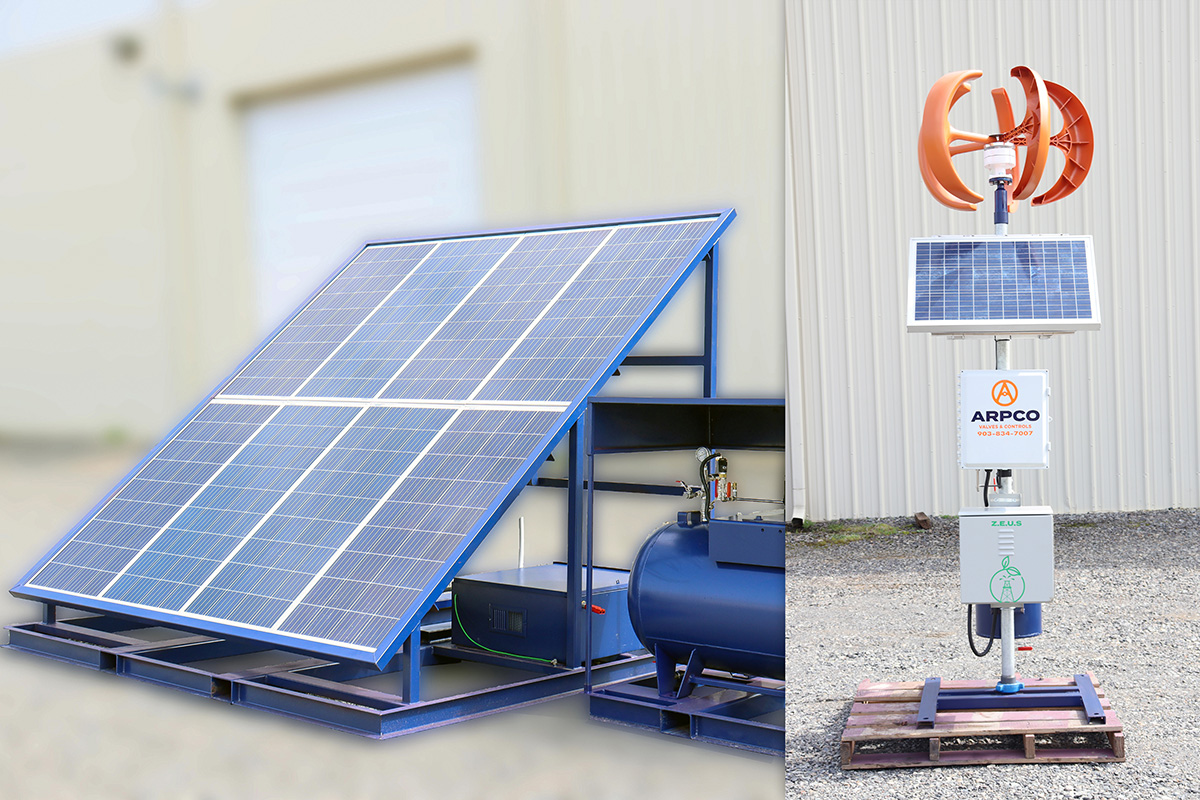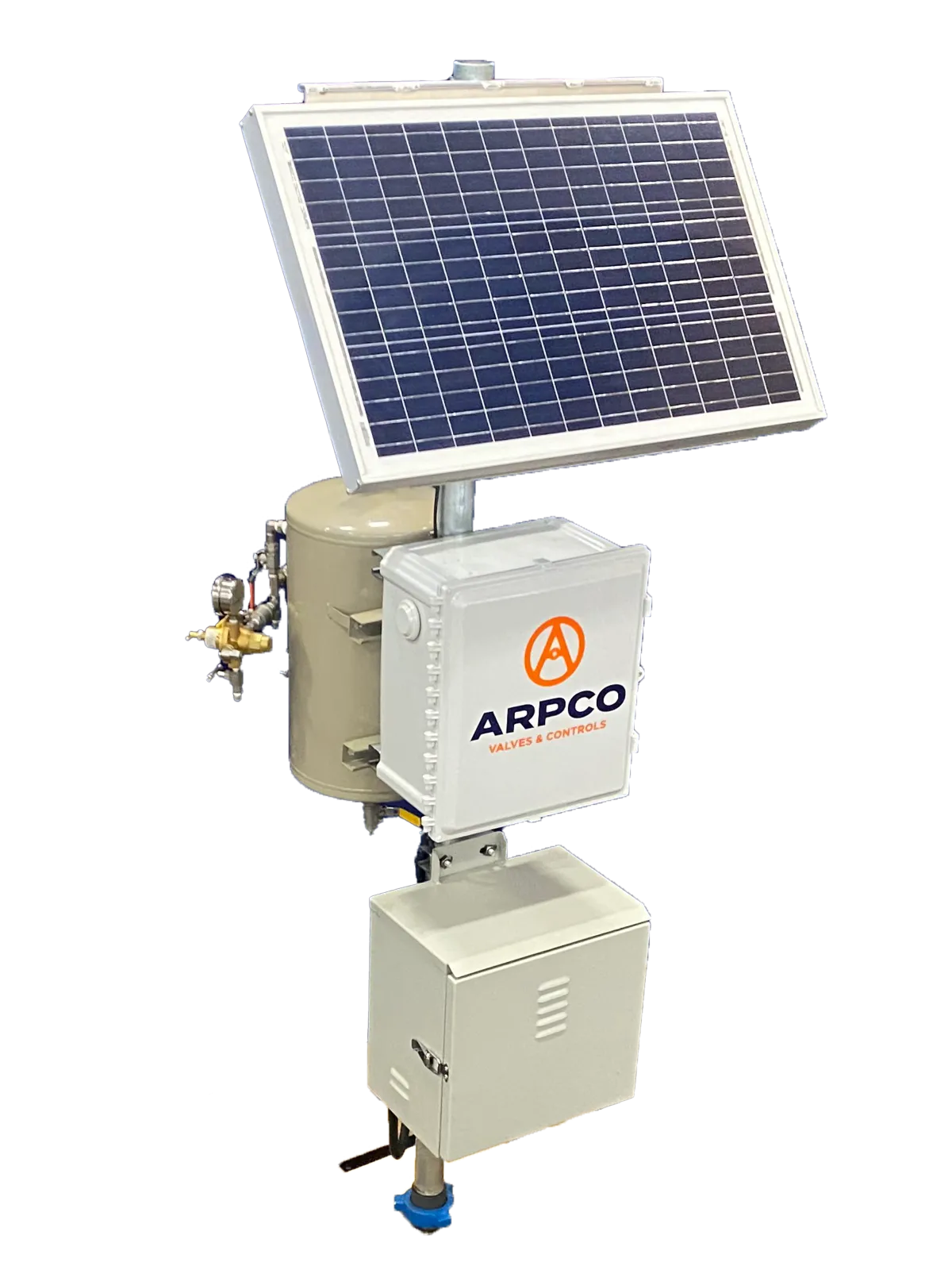
Pressure safety valves play a pivotal role in ensuring the safety and integrity of oil and gas operations. These valves are vital components designed to protect equipment and personnel from the potentially catastrophic consequences of overpressure situations. By automatically releasing excess pressure, they prevent equipment failures, leaks, and explosions, thereby safeguarding both human lives and valuable assets.
Arpco Valves & Controls: Commitment to Safety and Sustainability
At Arpco Valves & Controls, safety and sustainability are the core principles that guide our operations. We recognize the critical role that pressure safety valves play in maintaining operational safety and environmental responsibility in the oil and gas industry. Our dedication extends beyond providing top-quality valve solutions; we are committed to fostering a culture of safety and promoting sustainable practices throughout the industry.
Components and Operating Principles
Pressure safety valves are intricate devices comprised of several essential components, each playing a crucial role in their functionality. At the heart of these valves lies a device called the valve body, a sturdy casing designed to withstand high pressures and harsh operating conditions commonly found in oil and gas environments. Within this body resides the spring mechanism, meticulously calibrated to exert a precise force against the disc or piston.
The spring’s force is overridden when the system’s pressure rises above the predetermined threshold. This triggers the opening of the valve, allowing the excess fluid or gas to escape swiftly. This rapid release of pressure prevents the full system pressure from reaching dangerously high levels, averting potential disasters such as equipment rupture or pipeline failure.
Once the pressure within the system returns to safe levels, the spring’s force reasserts dominance, compelling the valve to reseat itself firmly. This action effectively seals the system once more, restoring normal operations and ensuring continued safety.
Importance of Pressure Relief Valves in Oil & Gas Operations
In oil and gas operations, pressure safety valves stand as stalwart guardians, ever vigilant against the looming threat of overpressure events. Their significance cannot be overstated, as they serve as the last line of defense against catastrophic failures that could result in significant financial losses, environmental damage, and, most importantly, human casualties.
Within the sprawling network of pipelines, sprawling refineries, and remote offshore platforms, pressure safety valves find their niche, diligently monitoring and regulating pressure levels with unwavering precision. Whether it be the relentless flow of crude oil through vast pipelines or the intricate processes within refinery units, these set pressures and valves remain steadfast, ready to spring into action at a moment’s notice.
Types of Pressure Safety Valves

Overview of Different Types
Relief Valves: These relief valves are designed to serve as the quintessential guardians against overpressure situations, tasked with relieving excess pressure from a system to prevent potential damage or catastrophic failure. Relief valves are characterized by their ability to open fully once the predetermined pressure threshold is exceeded, allowing the rapid discharge of fluid or gas until the pressure subsides to safe levels.
Safety Valves: As the name suggests, safety valves are engineered with one primary objective in mind: ensuring the safety and integrity of equipment and personnel. These valves operate similarly to relief valves but are designed to provide more precise pressure control, offering enhanced protection against overpressure events in critical applications.
Control Valves: Unlike their counterparts, control valves offer a more nuanced approach to pressure regulation, allowing for precise adjustment of pressure levels within a system. These valves are often employed in scenarios and systems where maintaining optimal pressure control is paramount, such as in refining processes or industrial applications requiring precise pressure management.
Application-Specific Valves
Gas Pipeline Safety Valves: These valves are specifically designed to withstand the rigorous demands of gas transmission pipelines, where high-pressure environments and fluctuating flow rates are commonplace. Gas pipeline safety valves prioritize reliability and durability, ensuring uninterrupted operation and safeguarding against potential ruptures or leaks.
Offshore Platform Valves: Operating in the harsh and unforgiving offshore environment poses unique challenges for pressure safety valves. Offshore platform valves are engineered to withstand extreme weather conditions, corrosive elements, and dynamic operating conditions, all while maintaining optimal performance and reliability to ensure the safety of personnel and assets.
Refinery Valves: Refineries represent the heart of the oil and gas industry, where crude oil is transformed into a myriad of valuable products through complex processes. Refinery valves are tailored to meet the stringent requirements of these processes, offering precise pressure control, high flow capacity, and resistance to corrosive substances, ensuring the efficient and safe operation of refining operations.
Design, Maintenance, and Compliance

ey Design Features Of A Pressure Relief Valve
Pressure Set Points: The pressure set point of a pressure safety valve is perhaps one of its most fundamental design considerations. It refers to the predetermined pressure threshold at which the valve will open to relieve excess pressure from the system.
Capacity Ratings: Capacity ratings denote the maximum flow rate that a pressure safety valve can handle when relieving excess pressure from the system.
Materials of Construction: The materials used in the construction of a pressure safety valve play a critical role in its performance, reliability, and longevity. Common materials used in pressure safety valve construction include stainless steel, carbon steel, brass, and various corrosion-resistant alloys.
Compatibility with System Fluids and Operating Conditions

The compatibility of a pressure safety valve with the system fluids and operating conditions is paramount to its performance and longevity. Factors such as the chemical composition, temperature, pressure, and viscosity of the fluid being handled must be carefully considered when selecting a valve to ensure that it can withstand the demands of the application without degradation or failure.
Factors such as temperature, environmental conditions, and potential exposure to corrosive substances or abrasive particles must also be taken into account. A thorough understanding of these factors is essential for selecting a pressure safety valve that will provide reliable and effective protection against overpressure events in a given application.
Maintenance Best Practices
Regular maintenance and testing are essential to ensure the reliable performance of pressure safety valves. Maintenance activities may include visual inspections, functional testing, and calibration to verify proper operation and compliance with industry standards.
Regulatory Compliance
Pressure safety valves represent critical components within the oil and gas industry, tasked with safeguarding personnel, equipment, and the environment against the potential hazards of overpressure events. To ensure their efficacy and reliability, these valves must adhere to rigorous industry standards and regulations.
API 520: Sizing, Selection, and Installation of Pressure-Relieving Devices in Refineries: API 520 provides comprehensive guidelines for the sizing, selection, and installation of pressure-relieving devices, including pressure safety valves, in refineries. This standard outlines procedures for determining the appropriate design parameters, such as relieving pressure and capacity, based on factors such as fluid properties, process conditions, and equipment specifications.
API 526: Flanged Steel Pressure Relief Valves: API 526 focuses specifically on the design, materials, testing, and certification requirements for flanged steel pressure relief valves. This standard establishes minimum performance and quality criteria for pressure safety valves used in oil and gas production, refining, and processing applications.
ASME BPVC: Boiler and Pressure Vessel Code: The ASME Boiler and Pressure Vessel Code (BPVC) sets forth standards for the design, construction, inspection, and testing of pressure vessels and related components, including pressure safety valves.
Compliance with ASME BPVC requirements is essential for ensuring the safety and integrity of pressure safety valves used in oil and gas applications. This code encompasses various sections, including Section VIII, which specifically addresses pressure vessels, and Section I, which covers power boilers.
In summary, adherence to industry standards and regulations such as API 520, API 526, and ASME BPVC is essential for ensuring that pressure safety valves meet minimum safety requirements and are suitable for use in critical oil and gas applications.
Benefits and Sustainability Impact

Ensuring the safety and reliability of industrial systems, especially within the high-stakes environment of the oil and gas industry, requires meticulous attention to the installation and maintenance of safety valves. Arpco Valves & Controls distinguishes itself by offering premium maintenance and installation services tailored to this sector’s unique needs. These services not only ensure that safety valves are installed correctly and maintained efficiently but also contribute significantly to minimizing operational downtime and extending the lifespan of these critical components.
Proper Installation Techniques for Pressure Relief Valves to Prevent System Failures
The correct installation of safety valves is fundamental to their performance and reliability. Arpco Valves & Controls emphasizes the importance of adhering to industry best practices and manufacturers’ guidelines during installation to prevent system failures. This includes ensuring that valves are installed in the correct orientation, with attention to the flow direction and positioning to facilitate accurate pressure readings and effective relief. The company also advises on the proper integration of safety valves into the system, considering factors like backpressure, environmental conditions, and potential obstructions to ensure optimal functionality. By prioritizing precise installation techniques, Arpco helps safeguard against premature valve failure and potential safety hazards.
Routine Maintenance to Minimize Downtime and Extend Valve Life
Arpco Valves & Controls provides comprehensive maintenance services designed to minimize downtime and extend the life of safety valves. Routine maintenance is crucial for detecting wear and tear, corrosion, or other issues that could compromise valve performance. Arpco’s maintenance program includes regular inspections, cleaning, and the replacement of worn components, ensuring that valves remain in peak condition. The company’s proactive approach to maintenance helps identify potential problems before they lead to system failures, thereby reducing the risk of unscheduled outages and prolonging the lifespan of these critical safety devices.
Testing Safety Valves: Procedures and Best Practices
Testing is a critical component of safety valve maintenance, ensuring that valves operate correctly under pressure and open at the set point. Arpco Valves & Controls adheres to strict testing procedures and best practices, utilizing state-of-the-art equipment to simulate operational conditions and verify valve performance. This includes both bench testing and in-situ testing, providing a comprehensive assessment of valve functionality. By following rigorous testing protocols, Arpco ensures that safety valves are ready to perform their protective functions, offering peace of mind to operators in the oil and gas industry.
Arpco Valves & Controls’ dedication to excellence in installation, maintenance, and testing services underscores its commitment to supporting the oil and gas industry’s safety and operational efficiency. Through its expert services, Arpco plays a pivotal role in ensuring that safety valves function reliably, protecting both personnel and assets from the dangers of overpressure.
Pressure Safety Valve Performance Under Various Conditions
Safety valves are designed to function under a variety of conditions, each presenting unique challenges to the valve’s operation and performance. The ability of a safety valve to reliably manage overpressure scenarios—whether due to thermal expansion, superimposed and built-up backpressure, or operating in high-temperature and critical applications—is crucial for maintaining system integrity and safety in industrial environments. Understanding how safety valves perform under these diverse conditions can help operators ensure they are prepared for any eventuality.
Handling Overpressure from Thermal Expansion
Thermal expansion occurs when a fluid’s volume increases in response to a rise in temperature, potentially leading to overpressure in a contained system. Safety valves play a pivotal role in mitigating this risk by releasing excess pressure to prevent system failure. The design and operation of these valves take into account the specific characteristics of thermal expansion, such as the rate of temperature and pressure increaseand the fluid’s thermal properties. By calibrating safety valves to respond to pressure increases resulting from thermal expansion, systems can be protected from the damaging effects of overpressure, ensuring continued operation and safety.
Dealing with Superimposed and Built-Up Backpressure
Superimposed backpressure is the pressure in the discharge area of a safety valve that exists before the valve opens. Built-up backpressure is the pressure that develops in the discharge system because of the flow after the valve opens. Both types of backpressure can affect the performance of safety valves by altering the differential pressure across the valve, potentially hindering its ability to open fully or close properly. To address these challenges, safety valves are designed and selected with backpressure considerations in mind.
Safety Valves in High Temperature and Critical Applications
In high-temperature applications, safety valves face additional challenges, such as maintaining seal integrity and material stability. The materials used in valve construction must withstand not only the high temperatures but also potential thermal cycling, which can lead to material degradation over time. Furthermore, in critical applications—where failure could result in significant harm to personnel, the environment, or the facility—safety valves must offer unparalleled reliability. This often requires the use of valves with advanced design features, such as metal-to-metal seating for improved sealing at high temperatures, and rigorous testing and maintenance protocols to ensure they remain in optimal working condition.
Frequently Asked Questions (FAQ)
What is thermal expansion, and how can it cause overpressure?
Thermal expansion occurs when a fluid (liquid or gas) increases in volume as a result of temperature rise. In a closed system, this volume increase can lead to overpressure, as the fluid has nowhere to expand. Safety valves help mitigate this risk by releasing excess heat and pressure when it exceeds the system’s design limits, ensuring the system’s integrity and preventing potential equipment damage or failures.
How do safety valves handle overpressure from thermal expansion?
Safety valves are designed to open at a predetermined set pressure, allowing them to respond quickly to the overpressure conditions caused by thermal expansion. By releasing the excess pressure, they prevent the system pressure from reaching dangerous levels. Once the pressure is relieved and falls below the set point, the valve closes, returning the system to its normal operating condition.
What are superimposed and built-up backpressure, and how do they affect safety pressure valves??
Superimposed back pressure is the pressure in the discharge area of a safety valve that exists before the valve opens. Built-up backpressure is the pressure that develops in the discharge system because of the flow after the valve opens. Both types of backpressure can affect the operation of safety valves by changing the differential pressure across the valve, potentially impacting the valve’s ability to open and close properly.
How do safety valves deal with superimposed and built-up backpressure?
Safety valves are designed and selected with these pressures in mind to ensure they operate correctly under all conditions. For example, balanced bellows or piston designs can minimize the impact of backpressure on the valve’s performance. Regular maintenance and testing also ensure that the valves can handle the expected back pressure without compromising their operation.
Why are safety valves critical in high temperature and critical applications?
In high-temperature and critical applications, such as in the petrochemical or power generation industries, equipment and processes are often under extreme conditions that can increase the risk of overpressure incidents. Safety valves are crucial in these settings because they can withstand high temperatures and harsh conditions while reliably operating to relieve pressure, thereby protecting both the equipment and personnel from potential harm.
How are safety valves designed for high temperature and critical applications?
Safety valves for high-temperature and critical applications are made from materials that can withstand extreme conditions without degrading. They may also feature special designs, such as bellows-sealed or pilot-operated mechanisms, to ensure precise operation under varying conditions. Additionally, these valves are rigorously tested to meet strict industry standards and certifications, ensuring their reliability and performance even in the most demanding environments.





